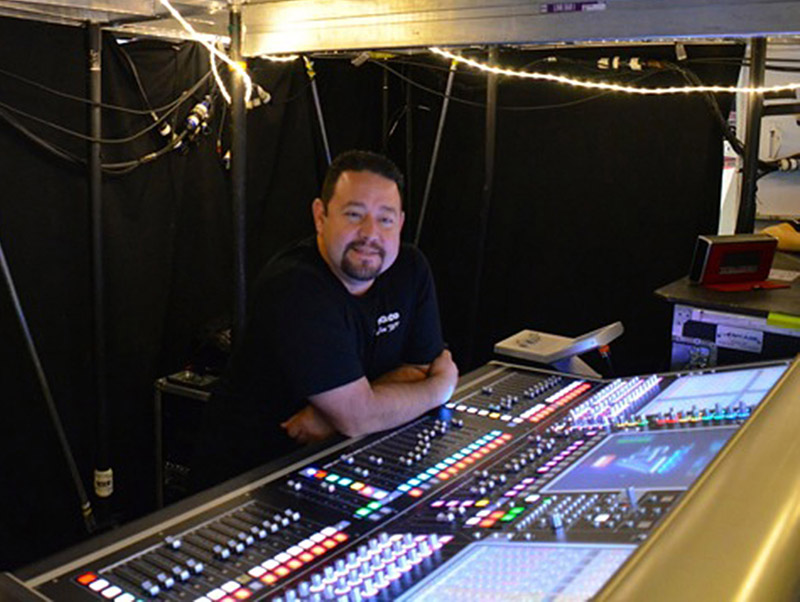
Now that we’ve moved to the digital world, it’s still great. The only difference is that most of the artists I work with have made the transition to in-ear monitors, exclusively. It’s rare when I run into a combination on stage.
Digital consoles no longer need racks and racks of gear, which makes things easier. Carrying your file on a USB stick, ready to do the next gig anywhere, makes it a bit easier, too.
That said, there are still many things to take into consideration to insure that your show is consistent, even when you’re just traveling with a stick.
What are some of the specific challenges?
It used to be that you could usually patch what you needed into the back of the console. With in-ear monitors, those days are gone because you need every input in your console. Mixing monitors, for me, is just like mixing a record, just like you do in a studio. Most artists want to hear their records in their ears. I’m mixing with different reverbs and delays, and plug-ins. It’s a changed game now—no longer is “I can hear myself” adequate. It’s about “I want to hear everything, and balanced correctly.”
I also take into consideration that I’m not in a perfectly tuned control room or listening through a precisely tuned PA. I’m mixing directly to the artists ears so I need to be careful because excessive volume can very easily render a careful mix useless, robbing it of definition. Too much volume can also cause (hearing) damage. Ideally, you want to have different layers so that everything can fall into place, pleasant but not harsh.
EQ, compression, gates—they’re all great tools, but what works for one input for one person on stage may not work for anyone else. I’m not just mixing the name artist, I’m mixing the entire band, and every one of those mixes is different. Sometimes I have to double an input, or find that fine line of EQ, or whatever it is, to make a particular input work in multiple mixes.
You’re also responsible for wireless microphone and in-ear systems, correct?
Just about everything now has to be wireless. Fortunately, the demand for it has opened up a new position: RF tech. Most larger tours now have one, thankfully. That said, I’ve recently worked some tours that didn’t have an RF tech because of budget considerations, so it become my responsibility.
I’m by no means anywhere as good with RF as some of guys I’ve worked with. The most I’ve tackled on my own is about 16 channels, which is still a big job.
For one thing, the RF landscape can change throughout the day. Scanning, finding good frequencies, spare frequencies, and keeping an eye on everything to make sure nothing pops up and shuts down one of your channels is definitely plenty challenging.
What gear do you prefer to work with, specifically?
Eighth Day Sound (the sound company for Lady Gaga) always makes sure I have what I need. I love my DiGiCo SD7 console—I’ve used it since I started with Lady Gaga, and right now, I don’t think I’d want to do a tour without one. That said, if I can’t get the SD7, there are other options—SD5, SD10, all great consoles. They sound great, you can program them to do just about anything, and they even look great.
It’s mainly Shure PSM 1000 systems for in-ear monitors, and I have a few Sennheiser G3 systems in the rack as well. All of them get used. There’s also a combination of Shure and Sennheiser mics on stage, along with a Telefunken mic or two.
One of my favorite pieces for a long time has been the TC Electronic System 6000 for its great sounding reverbs, delays and so on. A new favorite is the Bricasti M7 digital reverb, which sounds very nice. Everyone wears JH Audio earpieces, with the majority on the JH16. Things can get tricky when there’s a combination of different brands.

